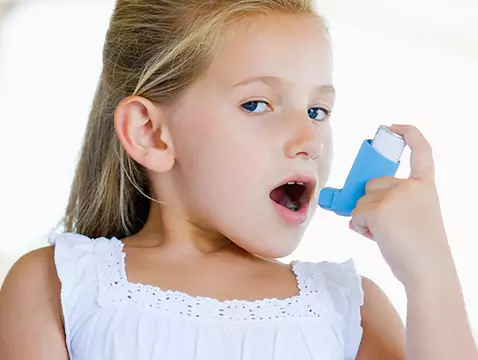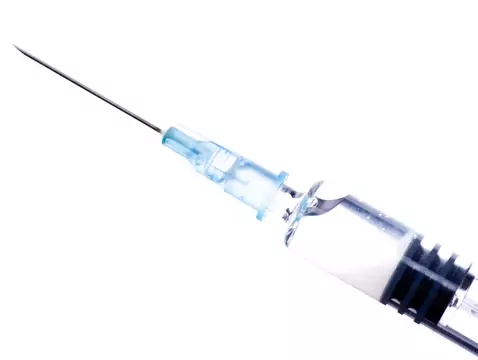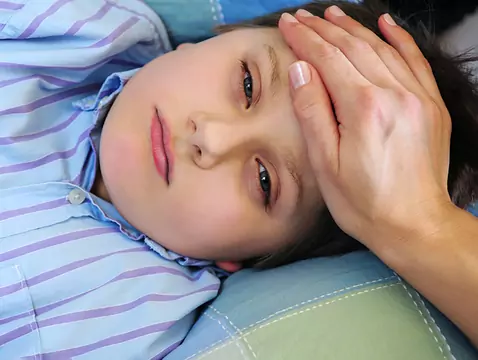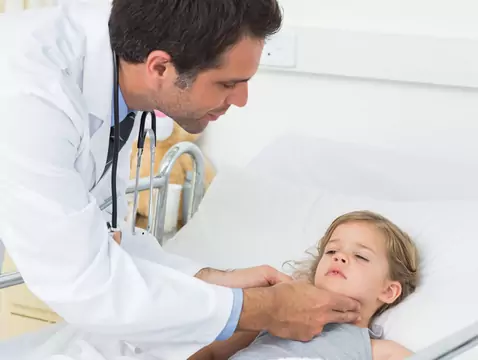
Bed-wetting - causes, symptoms, diagnosis, treatment
Bed-wetting is defined as a lack of control over urination at night in a child over 4 (5) years of age (there is also the term 'daytime wetting', when symptoms occur during the day). This age is the...

Bronchial asthma, part 1: causes, symptoms
The first part of this article on bronchial asthma explains in an accessible format the causes of asthma, its most common symptoms and how to assess respiratory function.

Vaccination against rotavirus - should I vaccinate my child?
Vaccination against rotaviruses is being carried out more and more frequently in infants in Poland, despite the fact that it is a fully-paid vaccination that is not reimbursed as part of so-called...

Rotavirus vaccination - is the vaccine effective and safe?
Rotavirus vaccines have been available on the market for some years. Their efficacy and safety have been tested in serious clinical trials.

Rotavirus - causes, symptoms, diagnosis, treatment
Rotaviruses are one of the most common causes of acute gastroenteritis in children. It is estimated that up to 80% of children undergo rotavirus infection by the age of 5. In 1 in 7 affected...

Rotavirus infections in children: clinical picture and principles of prevention
Discussion of the epidemiology and clinical picture of rotavirus infections and current recommendations for rotavirus vaccination.

Vomiting in children - causes
Discussion of the most common causes of vomiting by different age groups. The importance of diagnosing gastrointestinal malformations and neurological conditions is highlighted.

Pneumococcus - causes, symptoms, diagnosis, treatment
Pneumococci (Streptococcus pneumoniae bacteria) are particularly dangerous for people in so-called risk groups.

Acute diarrhoea in children - causes, symptoms, diagnosis, treatment
Saccharomyces boulardii is a strain classified as a probiotic. In our market, it is an ingredient of an over-the-counter preparation called Enterol. The main indication for its use is the...

Diarrhoea in a child - causes, symptoms, diagnosis, treatment
Diarrhoea in a child can be acute or chronic diarrhoea. Chronic diarrhoea, i.e. diarrhoea lasting at least 10-14 days, is a serious health problem requiring specialist consultation. Acute diarrhoea,...

Soy milk in older children with lactose intolerance
Hypolactasia and lactose intolerance are relatively common in older children in our country. Approximately 15-20% of our country's population has a genetically determined lactose-digesting enzyme...

Sepsis - causes, symptoms, prevention
A comprehensive text answering the most important and frequently asked questions about sepsis. Indications for vaccination and prophylactic medication are highlighted.

Blood in the stool in a child - causes
An article by a specialist from the Department of Paediatric Gastroenterology presents the problem of the presence of blood in stools in children of different ages. The first part of the text...

Hypothyroidism in children and adolescents, part 1
The first part of the article on hypothyroidism in children and adolescents discusses the most common form of the disease - congenital primary hypothyroidism. The importance of early diagnosis and...

Meningococcus - causes, symptoms, diagnosis, treatment, risk factors for infection, prevention
Meningococci can cause very serious illness, including fulminant septicaemia, leading to death within a few hours of the first signs of illness.

Meningococcal vaccination - when to do it?
The existing meningococcal vaccines on the market differ in their indications of the permissible age at which a child can be vaccinated.

Meningococcal vaccination
For many years, pharmaceutical companies have been trying to develop an effective vaccine to protect against meningococcal infections (meningococcus bacteria).

Baby can't breathe through the nose
Difficulty in breathing through the nose is quite often observed in infants, occurring despite the absence of an obvious runny nose. This is sometimes accompanied by sounds described as wheezing.

Three-digit ESR result
A 'three-digit' ESR is a common term for an ESR result exceeding 100 mm per hour.

Hyperthyroidism in children - aetiopathogenesis and symptoms
Hypothyroidism is a disease with a varied aetiology and often a highly variable clinical picture.




